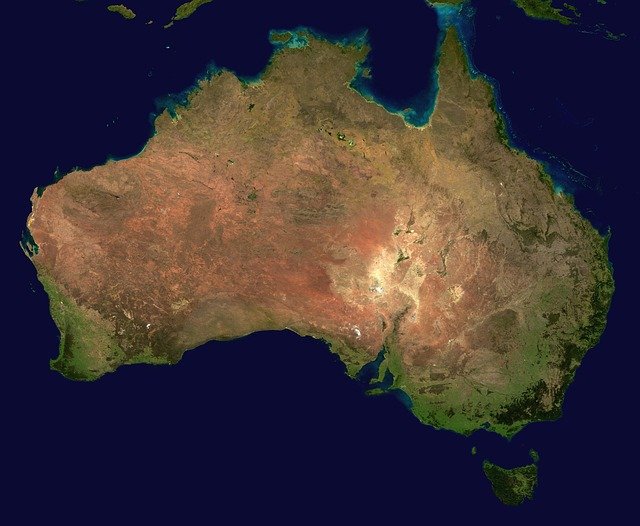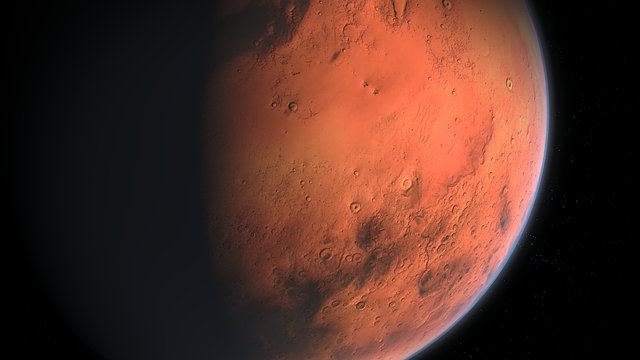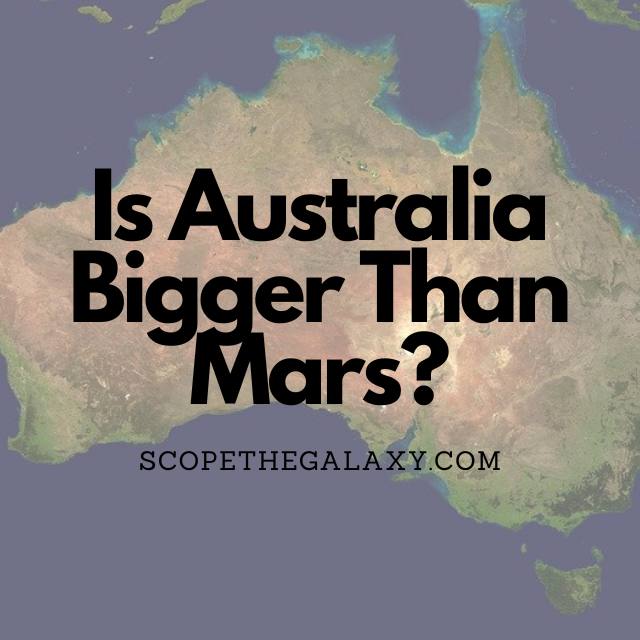*This post may contain affiliate links. This means we may make a commission if you purchase an item using one of our links*
Australia’s surface area is 7.62 million km² whilst Mars has a surface area over 18 times that at 144.8 million km² and Mars’ volume is well over 500 times larger at 163 billion cubic kilometers compared to Australia’s 304.7 million cubic kilometers.
For a more thorough breakdown of the size of both Australia and Mars, continue reading as it will be discussed in more detail below.
How Big Is Australia?

Australia is the sixth largest country in the world, following Russia, Canada, China, the USA, and Brazil. This commonwealth country comprises mainland Australia plus Tasmania and several other smaller islands; this land has a total area of 7,617,930 sq. km.
As for the overall volume of Australia, if we consider that Earth’s crust ranges from around 5 to 70 km in thickness. Generally, this crust is thicker under the continental land, which averages 40 km.
Therefore, by taking this average of 40km and multiplying it by the surface area of Australia, the volume would come up to roughly 304,717,200 cubic km.
The diameter of Australia, measuring from East to West, is 4000km, making it wider than the moon along with a large number of the smaller moons and planets like Pluto.
Within this expansive continent is a collection of mountainous regions and ranges. The largest is the Great Dividing Range or the Eastern Highlands, which stretch 3,500km parallel to the East Coast.
Within the Great Dividing range lie the Australian Alps, a mountain range that is host to some of the highest peaks in the country, including Mount Kosciuszko, which is 2,228m high.
Fifty kilometers to the west of Sydney are the Blue Mountains, which are named for the blue haze filling the surrounding area. While these mountains are impressive, Australia has surprisingly few notable peaks considering its size. Instead, it has vast expanses of desert known as the Australian outback.
How Big Is Mars?

Mars is the fourth planet in line from the Sun and the second smallest planet in our solar system. It has a diameter of 6,779 km, which is only just over half as large as Earth’s (around 53%)
The physical geography of Mars is very different from that of Earth. The atmosphere on Mars is much thinner than ours, and it consists mainly of carbon dioxide (CO2) with small amounts of nitrogen (N2). The surface gravity on Mars is much lower than that on Earth, so an object that weighs 100 pounds on Earth, would weigh just 38 pounds on the red planet.
The surface of Mars is mainly composed of various minerals like iron oxide and silicon dioxide. It also has polar ice caps, but it doesn’t have any oceans or seas.
Olympus Mons is the largest volcano on Mars, with a diameter of 600km. And it is the largest mountain in our solar system, standing at roughly 27km high (almost three times the height of Mount Everest)
The Valles Marineris system of valleys is a vast network of canyons on Mars; the largest canyon in the solar system. It is located in the planet’s southern hemisphere and extends for around 4000 kilometers from east to west; the deepest points can extend up to 10km.
The basic makeup of Earth and Mars is similar as they are both terrestrial planets with a dense metallic core and overlying crust and mantle. However, Earth’s density (5.514g per cubic cm) is higher than Mars’ density (3.93g per cubic cm), suggesting that the red planet’s core contains lighter elements than Earth’s.
The surface area of Mars is around 144.8 million sq. km, about 18.9 times the surface area of the Australia. Meanwhile, the volume of Mars is approximately 163 billion cubic kilometers, roughly 540 times that of Australia.
Summary
In terms of overall size, there is no competition in regards to which entity is larger. Although Australia is big in its own right, Mars is far bigger due to its spherical body as opposed to Australia’s surface that is a mostly flat plane.
As a result despite being the 6th largest country on Earth whilst Mars is the 2nd smallest overall planet, it still has a diameter almost double that of Australia’s, 18 times larger in surface area and well over 500 times Australia’s cubic volume.

